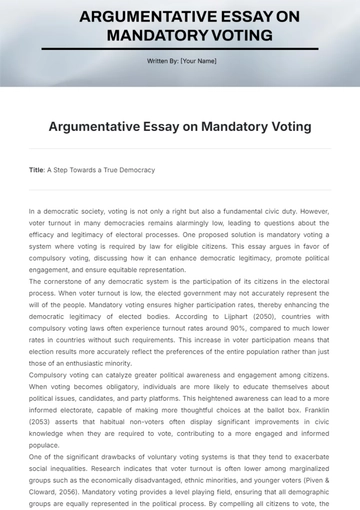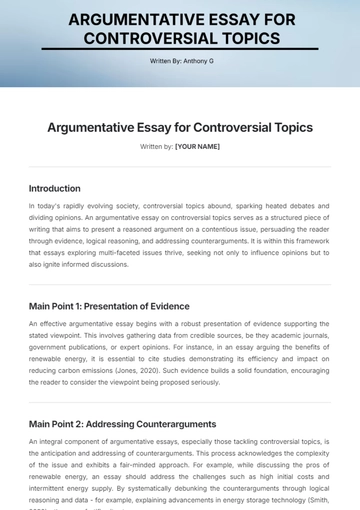Free Argumentative Essay on Urban Sprawl

Introduction
Urban sprawl, characterized by the uncontrolled expansion of urban areas into surrounding rural or undeveloped land, is a growing concern for cities around the world. This phenomenon, driven by population growth and increased vehicle use, poses significant challenges to environmental sustainability, public health, and urban planning. While some argue that urban sprawl contributes to economic growth and provides affordable housing options, a closer examination reveals that its detrimental effects outweigh its perceived benefits.
Environmental Impact
One of the most pressing issues associated with urban sprawl is its negative impact on the environment. As cities expand outward, natural habitats are destroyed, leading to a loss of biodiversity. For example, the conversion of forests and wetlands into residential and commercial areas disrupts ecosystems and endangers wildlife. Additionally, urban sprawl contributes to increased air pollution due to the reliance on automobiles for transportation. The spread of development into previously undeveloped areas often results in higher greenhouse gas emissions, as longer commutes and increased vehicle use contribute to climate change.
Strain on Public Infrastructure
Urban sprawl places an immense strain on public infrastructure and services. As cities spread out, the demand for roads, utilities, and emergency services increases, often outpacing the capacity of existing systems. This can lead to higher costs for municipalities, as they must extend infrastructure into newly developed areas. For instance, maintaining roads and providing public transportation services in sprawling suburbs can be far more expensive than in more densely populated areas. A report by the Urban Land Institute highlights that the cost of providing infrastructure and services to sprawling developments can be 20–30% higher compared to more compact urban areas.
Undermining Community Cohesion
Urban sprawl also undermines community cohesion and social interaction. In sprawling neighborhoods, the increased dependence on private vehicles and the physical distance between homes can isolate individuals and reduce opportunities for social engagement. Traditional urban areas with mixed-use developments and walkable communities foster a sense of belonging and encourage interaction among residents. In contrast, sprawling suburbs, characterized by segregated residential and commercial areas, often lack public spaces and amenities that facilitate community bonding.
Economic Considerations
While proponents of urban sprawl argue that it offers affordable housing and stimulates economic growth, these benefits are often overstated. Sprawling developments can lead to lower property values and increased costs of living due to the inefficiencies in infrastructure and public services. Additionally, the economic benefits are frequently short-term and do not account for the long-term costs associated with environmental degradation and infrastructure expansion.
Conclusion
In conclusion, urban sprawl presents significant challenges that undermine environmental sustainability, strain public infrastructure, and diminish community cohesion. The negative impacts far outweigh the perceived benefits of economic growth and affordable housing. As urban populations continue to rise, it is imperative that cities adopt more sustainable growth strategies that prioritize compact, walkable development and invest in public transportation. By addressing the root causes of sprawl and embracing more sustainable urban planning practices, cities can create more resilient, equitable, and environmentally friendly communities for future generations.
- 100% Customizable, free editor
- Access 1 Million+ Templates, photo’s & graphics
- Download or share as a template
- Click and replace photos, graphics, text, backgrounds
- Resize, crop, AI write & more
- Access advanced editor
Craft compelling arguments with the Argumentative Essay on Urban Sprawl Template, offered by Template.net. This customizable, downloadable, and printable template provides an organized format to structure your thoughts effectively. Easily editable in our AI Editor Tool, you can tailor the content to meet your specific needs.





























